City Museum In St. Louis Provides Hands-on Experience
The eclectic and award-winning City Museum in downtown St. Louis, Mo., isn't just on the cutting edge of the imagination. It is the cutting edge of imagination.
The City Museum is a unique, interactive museum-playground, where one can admire, play, feel, or touch, almost everything in the place. It is a fully accredited member of the American Association of Museums. The philosophy of combining a museum with a child's playground is now spreading across America faster than a Wyoming wildfire.
For children from ages 2 to 100, the three-year-old City Museum has far exceeded the initial expectations of its founders, sculptors Bob and Gail Cassilly. This is due, in no small part, to a small and very dedicated staff and contingent of over 200 volunteers.
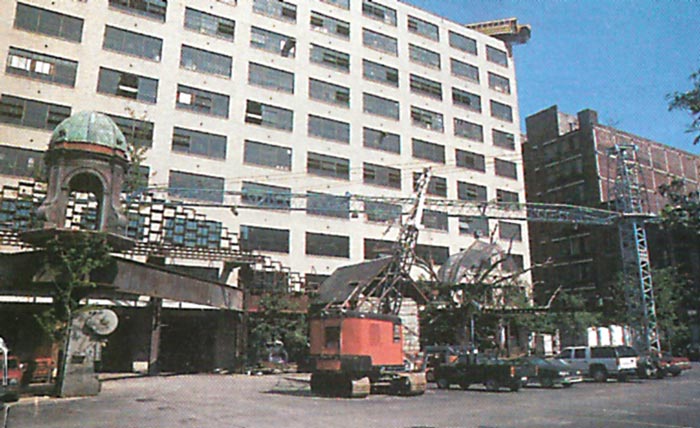
The museum is in a building downtown that formerly housed a shoe manufacturing company.
City Museum occupies 115,000 square feet of space on the first three floors of the old International Shoe Company building. The remainder of the 10-story structure has been developed by the Cassillys into lofts and offices known now as the International Arts Center. The museum facility has a combination of permanent exhibits and an ever-changing selection of special transitory ones.
For the Cassillys recycling is an art unto itself.
"Anything becomes fair game with us," said Gail. "Nearly everything has the potential to stimulate the mind and challenge one to think creatively."
"If we could buy it in a store or order it from a catalog, we didn't want it," Bob added.
If the ultimate aim of a museum is education, City Museum has achieved its objective. Almost everything in the museum, including the very building itself, has materialized from recycled objects. What better way to educate people of all ages to the benefits of recycling than to show them the positive results?
Over a million pounds of concrete, that would otherwise have been wasted, have been recycled into caves and other exhibits. More than 4,000 feet of tunnels, crawlways, and sky slides have been recycled from the old building's steam heating tubing. An old Anheuser-Busch Brewery heat exchanger has been recycled into a giant "Slinky" which children can climb through. Over 690 conveyor belt rollers have each been hand painted by school children. They now form the railing between museum floors. Another section of conveyor belt with its rollers intact, forms a people slide.
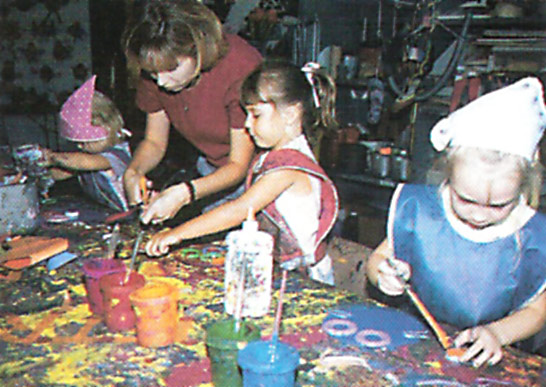
The "Art City" section of the interactive museum allows hands-on experience in a variety of activities from painting to weaving.
A 35,000 gallon, well -stocked, aquarium, a 65' replica of a Bowhead whale, an enchanted forest, the world's largest windmill, and a shoelace making machine, are all part to the museum's whimsical side. Also, add live daily circus performances, working Pac-Man and pinball machines, and the Lizard Lounge Restaurant to the list.
On the serious side, an immense collection of antique doorknobs and hinges show how St. Louis homes were once built. To bring this home to the children, the staff has set out several of the huge old metal door hinges used during the period. Materials are furnished and the children are encouraged to make "rubbings" of the ornate designs cast into the hinges.
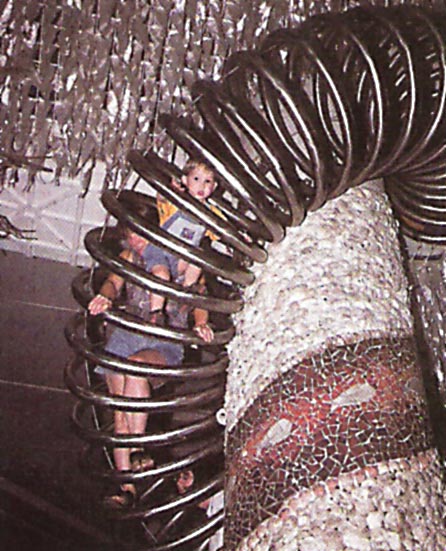
This recycled cooling coil taken from a brewery makes for an adventurous climb.
A special interactive exhibit entitled"I do, I do, St Louis" featured the history of weddings in old St. Louis. For the children, there was the opportunity to try on and model some of the wedding finery. Surprisingly, the boys have as much fun with this exhibit as the girls. NBC's Today sent a full TV news crew, which produced a four-minute segment.
It is most fitting that City Museum recently mounted a large exhibit on shoes called "The Really Big Shoe Show." Fitting, because the building they occupy was once the home of the Brown Shoe Company, once the largest shoe manufacturer in the world.

The museum includes this display that allows children to see how a common hammer works.
The exhibit attracted nationwide media reviews. From that large display evolved a smaller permanent replica of an old -time shoe store. It includes a "foot theater1' in which children try on oversize shoes and give performances shown only from the knees down.
Another special display that attracted rave reviews was "Tools as Art" from part of the famed Hechinger Collection in Washington, D.C. As part of the museum's effort to make the show interactive for the playground crowd, a giant hammer was constructed and mounted on a pivot point at the exhibit's entrance. Children and adults, large and small, could come up and discover the physics of a hammer's operation.
Priceless artworks illustrating how tools are used in our lives were intermixed with a capricious, two-headed hammer and an eye-stopping sculpture made from a series of connected common box end wrenches, the final one which was turning a nut. An oil on canvas entitled "Women in Labor" illustrates the contribution of women to the workforce.
Part of the museum's second floor is set aside for Art City. Within this area, there are painters, weavers, potters, glass blowers, and the shoelace factory, complete with the working antique shoelace-making machines. The children (and adults, if they so desire) are encouraged to avail themselves of various materials to help them have a better hands-on understanding of the crafts involved. Many a budding artist has made his or her first attempt at artwork here. Maggie Probert, a member of the museum staff, explained that a very important segment of their attendance comes from Charter Schools, which now abound throughout Missouri.
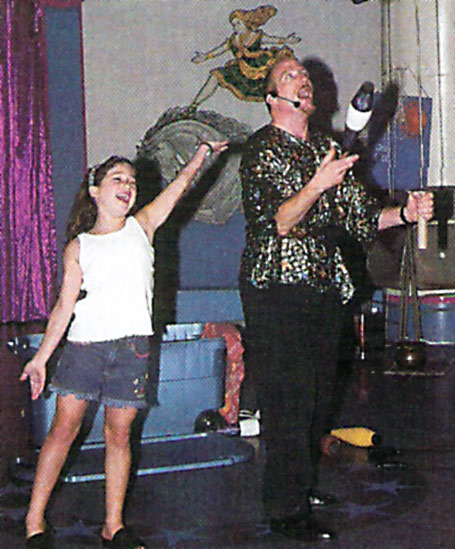
The City Museum holds daily circus performances, in which the children are able to get involved in a variety of ways.
"Often these schools have very low budgets for anything other than essential schoolwork," Probert said. "So, they know that the City Museum can fill this need for that necessary learning experience. And they do take advantage of this."
You enter the indescribable area known as the Museum of Mirth, Mystery, and Mayhem at your own risk. This series of rooms is known impishly as "Beatnik Bobs." Almost anything goes, from the history of the ubiquitous corn dog to a working candy factory.
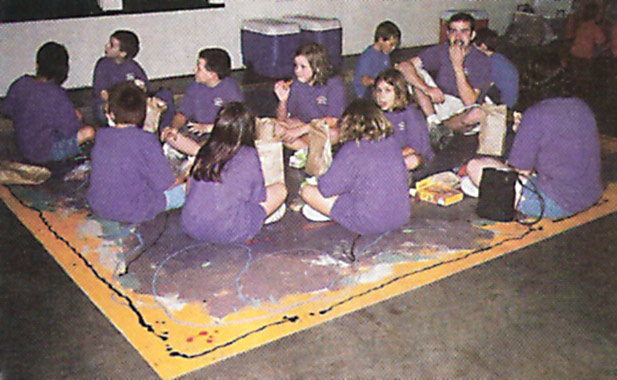
Specified lunch areas, complete with picnic decorations, are available for schools to use as part of field trips.
Birthday parties are encouraged and, after the cookies, cake, and ice cream, the groups treated to special reserved seating at the circus performances. It is common practice for the clowns, jugglers, and magicians to involve children from the audience in their act. The kids love it.
It is not unusual to have several local and regional schools sending classes to the museum at the same time. Because a visit to City Museum by a class of school children is often an all-day event, the museum staff have come up with a unique method for their lunch period. They have painted a series of multi-colored, 10' X 1 O' "picnic blankets" on the floor of a large open space. The children bring " brown bag" lunches which teacher's store in portable picnic coolers. At the appropriate time, the staff brings out each class's lunch basket. Once they are finished the staff cleans the area and readied it for the next class.
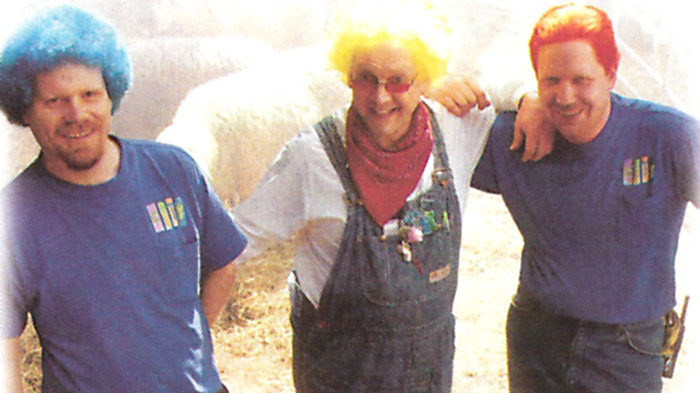
Every April, the museum holds a "Festival of Fibers" that allows children to see the process of creating textiles. Often, members of the staff dye their own hair and offer it for use at the festival.
Each April, the museum staff mounts a demonstration exhibit entitled the " Festival of Fibers".
In the context of telling the story of fibers, several sheep are brought in, kept on site, and daily one or more are shorn of their wool, which is then processed into fibers. To keep the children's interest, the sheep have been dyed various colors with a harmless Kool-Aid mixture. Needless to say, this is a very popular and educational event. In the past, more than sheep have also been sheared. Pets, including dogs, have felt the shears, as have several museum staff members who volunteered their locks, to have even those hairs woven into fibers, in the interest of realism.
The Enchanted Forest with its secret passages, caves, tree trunks, and branches, as well as exotic animal paintings, (some done by children) is one of the more favored places. Interconnecting hidden byways lead through the area. Children and adventurous adults crawl through various well- lit tunnels, and to their delight, often come out at unexpected places. Hide and seek games are very popular.

A large diameter former steam heat tube from the building has been recycled into a slide from the second floor down to the first floor. It is not unusual to see parents watching their offspring make several trips through the slide before the bug bites them, and they too, try their hand, or bottom, at the slide, much to the encouragement of other adult onlookers. It is soon an interactive adult child participation.
Safety is a major consideration for all City Museum exhibits, especially the interactive one like the tunnels and slides. Because scrapes and skinned knees can result at times from the activities, the museum has knee pads for rent. Interestingly, it is often the adults who take advantage of this protection, old bones being what they are.
Probably the most frequently heard comment by children upon leaving the City Museum was one made by a 12 - year-old explaining his experience to his teacher.
"This can't be a museum, I've had too much fun."


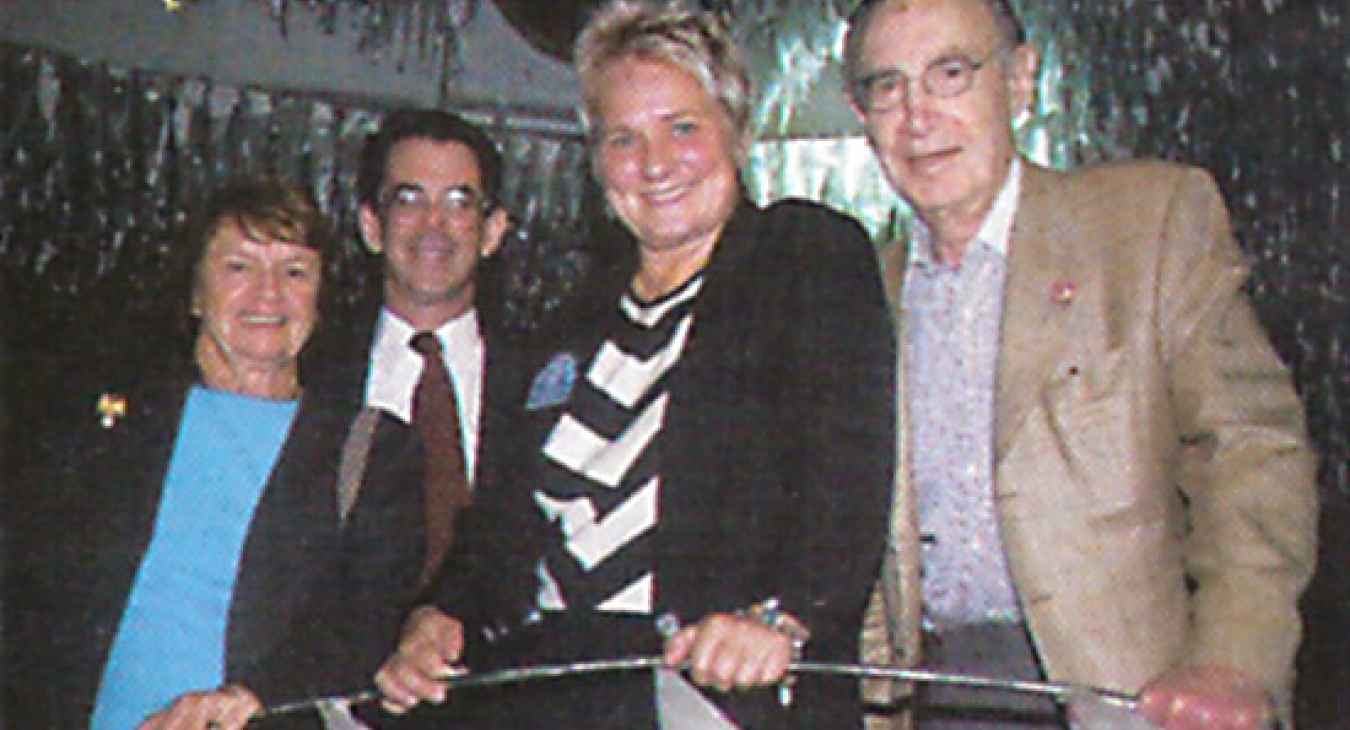
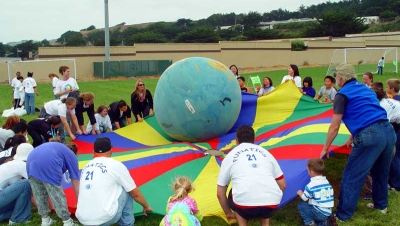
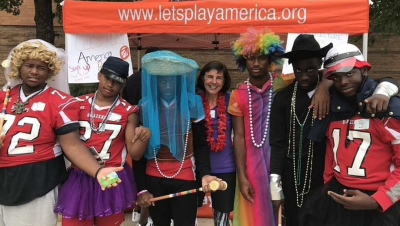






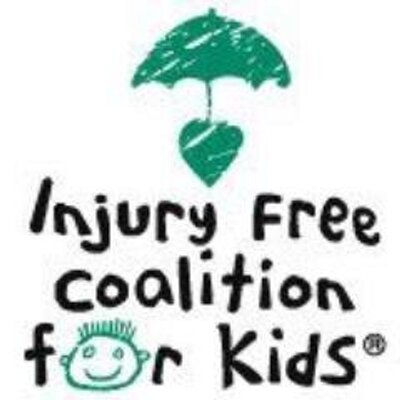
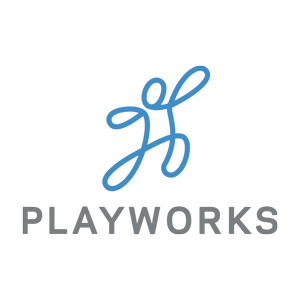
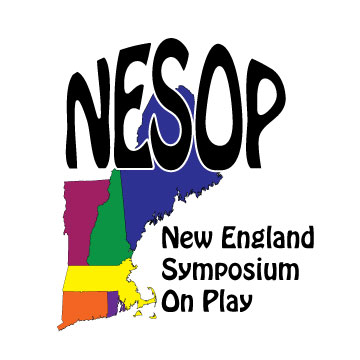






Add new comment